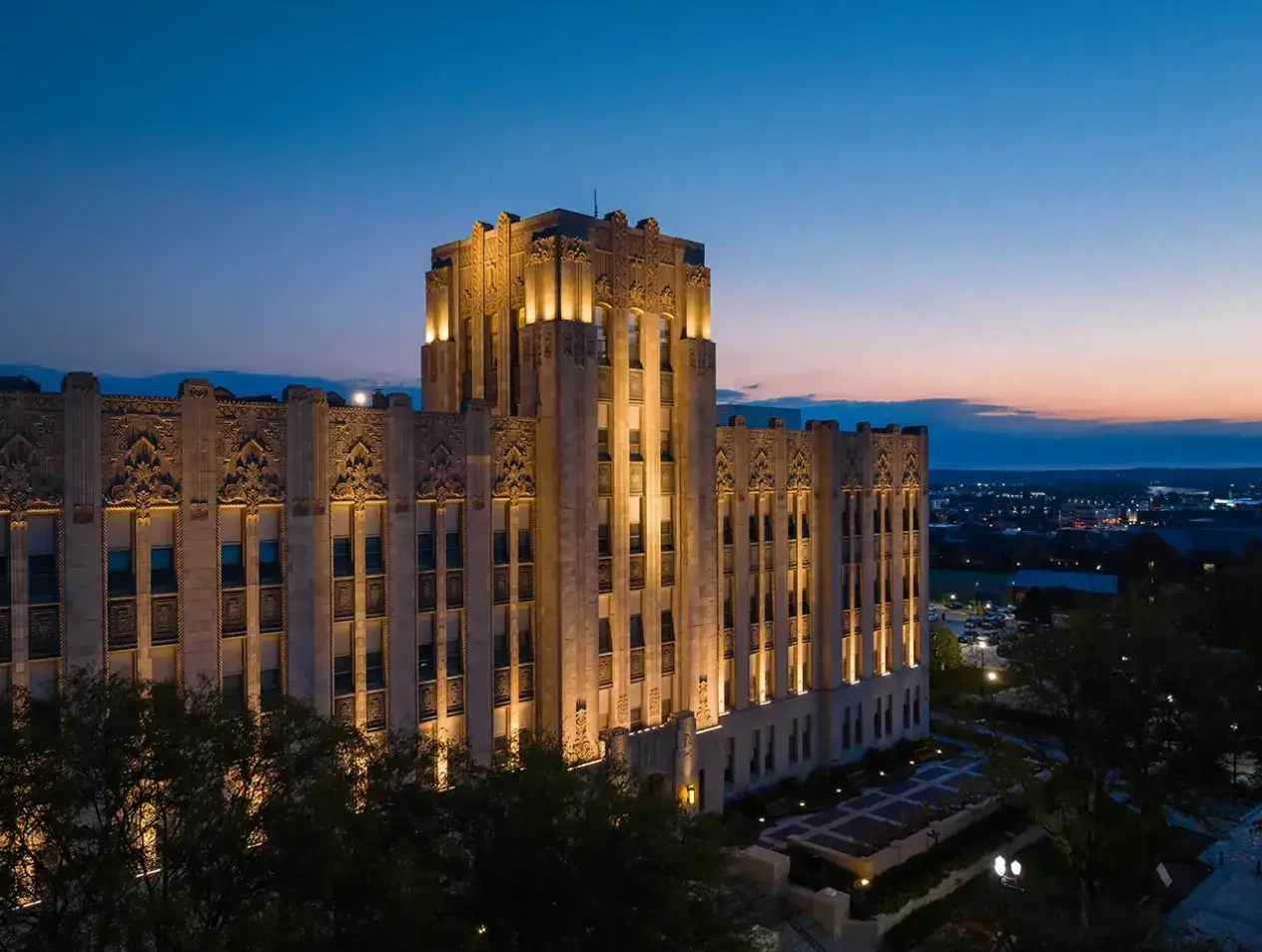
Creighton's History
Founded on Faith, Built for Impact
On Sep. 2, 1878, five Jesuits, two lay teachers and 120 students began classes at the new Creighton College in Omaha, Nebraska.
Creighton was named in honor of Edward Creighton, a prominent businessman and philanthropist. Following his death, Edward’s widow, Mary Lucretia Creighton, bequeathed funds to establish a school in his memory, emphasizing the Jesuit commitment to education and service.
From its humble beginnings, Creighton has grown into a comprehensive university offering undergraduate, graduate and professional programs across disciplines in medicine, law, business and the arts. Throughout its history, Creighton has maintained a strong dedication to Jesuit values, including academic excellence, social justice and community engagement, making it one of the leading Catholic universities in the United States. Today, dozens of Jesuits partner with lay colleagues in continuing the work and mission of the university.
The Creighton Family and Their Legacy
Edward and Mary Lucretia Creighton were married in 1856. Edward was born in Ohio in 1820 and moved to Omaha in 1856. Even before arriving in Nebraska, he had become a successful businessman with diverse business interests that included cattle ranching, banking and freight operations. He also played a major role in developing the transcontinental telegraph line. Mary was born in 1834, and she became known for her charitable work; she personally delivered food, money and other items to Omaha families in need. Fun fact: She would ride her horse, “Billy,” to make these deliveries. Billy is the namesake of Creighton’s current day mascot, Billy Bluejay.
When Edward died in November 1874, he passed his fortune to Mary. When Mary died two years later, her will specified that $100,000 be used as a memorial to her late husband, and the funds were to be used to purchase the site for a school in the city of Omaha and erect buildings thereon for a school of the class and grade of a college.” Bishop James O’Connor took on the task of starting the school Mary envisioned, and he enlisted the Society of Jesus to operate the University.
Edward’s brother, John, also moved from Ohio to Nebraska in 1856. John initially worked for Edward, and he emerged as a leading figure in the Omaha community—he was one of the organizers of the Omaha stockyard—and had business interests across several states. In 1868, John married one of Mary’s younger sisters, Sarah Emily. And in 1895, Pope Leo XIII named John a Knight of the Holy Roman Empire for his philanthropic support of Creighton University and other Catholic works.
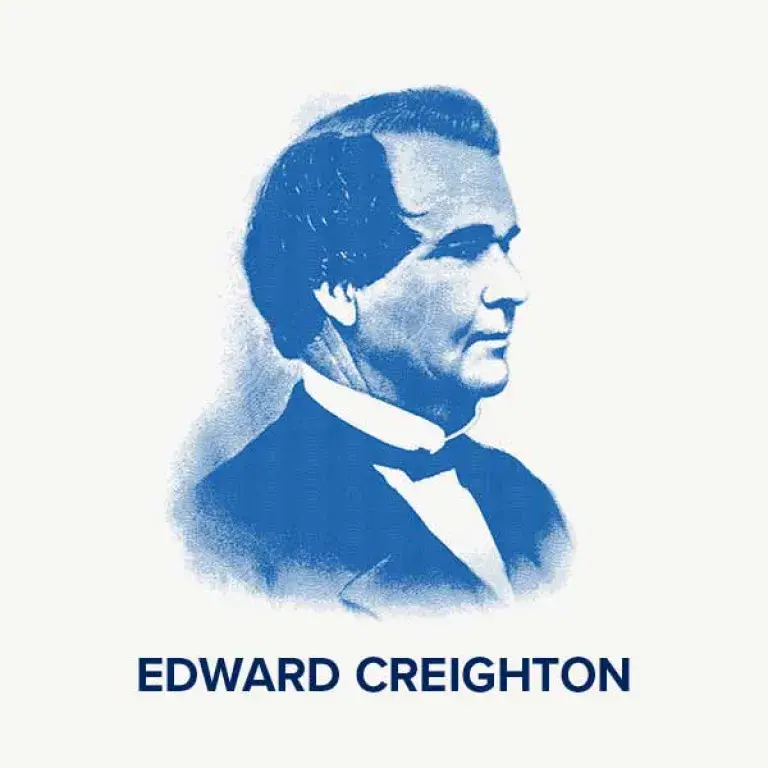
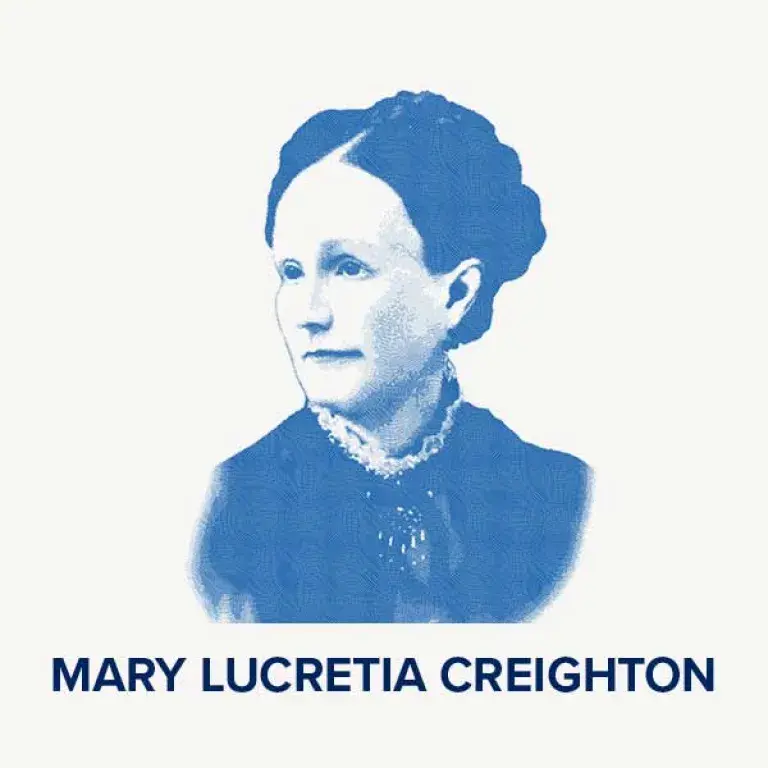
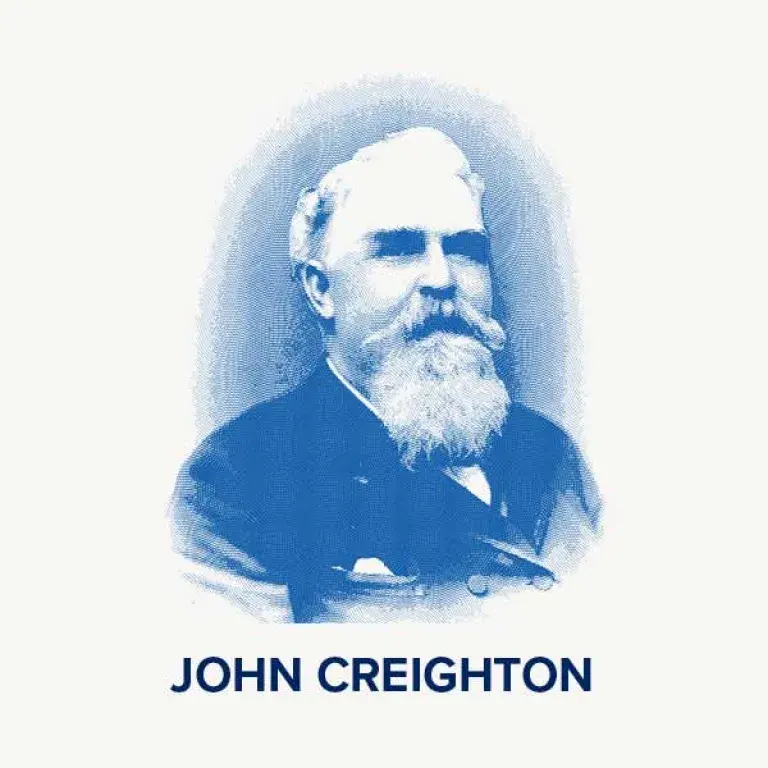
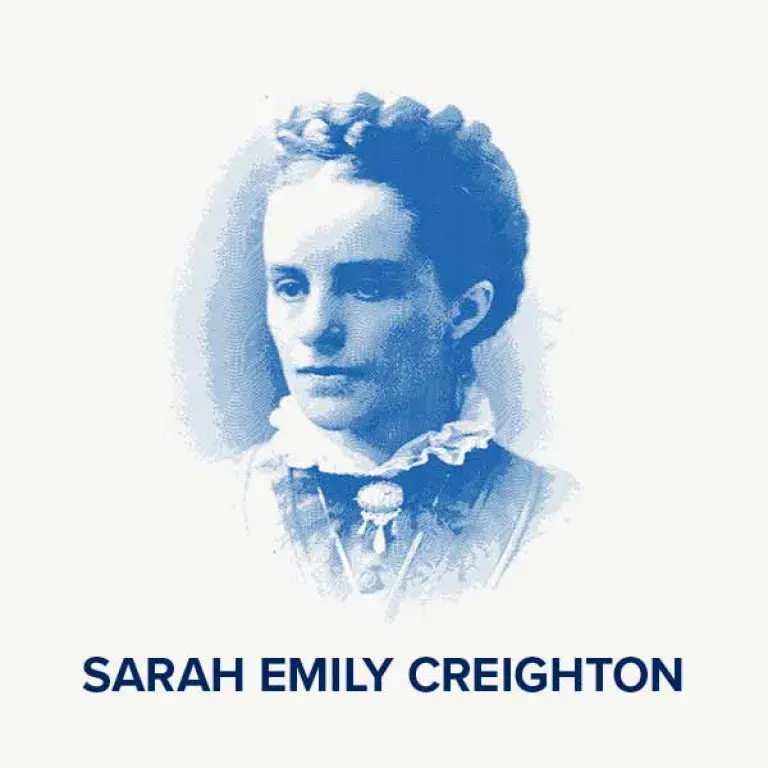
Founders Week
Creighton began celebrating Founders Week in the early 1900s, and today it's held each year near the start of the spring semester. During the week, we honor the founders of our institution, the many individuals who have shaped and sustained the university through the years, and the unique ways each of us do and will continue to live out Creighton's distinctive mission.
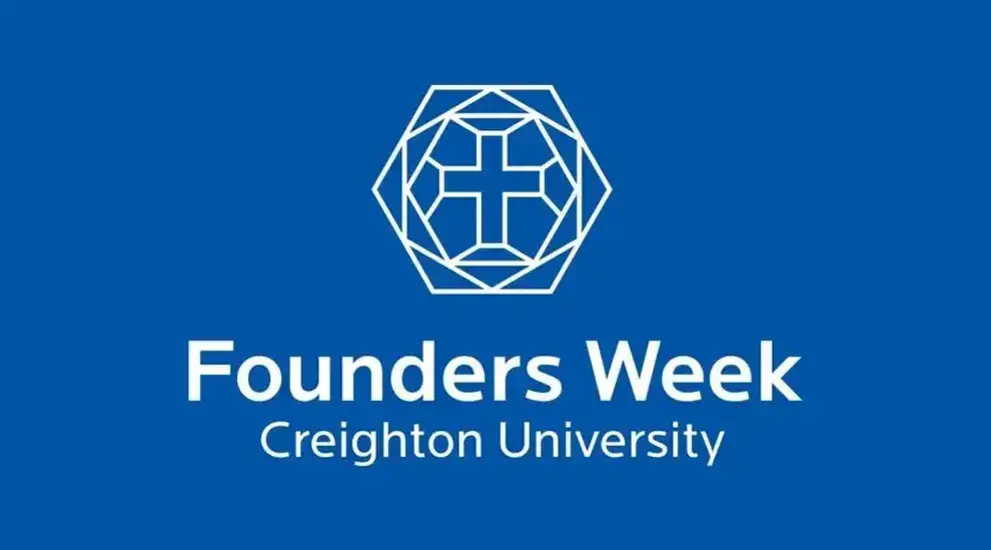
The History of Our Campus and Colleges
The University’s original building, Creighton Hall (formerly known as the Administration Building) originally housed the College of Arts and Sciences, which remains the largest division within Creighton. In 1930, an expansion added the distinctive art deco limestone façade to Creighton Hall’s main entrance. Today, Creighton Hall houses several offices, including the Office of the President. Below are some additional historical facts about the campus and colleges.
- The first part of the Creighton Observatory, a brick roundhouse with a revolving dome, was constructed in 1886, while the rectangular transit room was finished the following year.
- The John A. Creighton Medical College was established in 1892, when Creighton became a university in the true sense of the word. It was affiliated with the new Creighton Memorial St. Joseph’s Hospital, which was named for Sarah Emily Creighton. The Medical College’s first permanent home, funded by John A. Creighton, opened in 1895 at the corner of 14th and Davenport streets.
- In 1904, the School of Law began as a joint project with the Omaha Bar Association. The school was housed in the Edward Creighton Institute on S. 18th Street until 1921, when it moved to new quarters on the Creighton campus.
- The School of Dentistry held its first class in 1905 with 113 students. In 1906, the school absorbed the Omaha Dental College.
- The history of the School of Pharmacy and Health Professions goes back to 1905, with the establishment of the Creighton College of Pharmacy. The school expanded to include other health professions and today offers clinical doctorate degrees in occupational therapy and physical therapy.
- Creighton University’s nursing program can be traced as far back as the 1920s. The program began offering four-year academic and clinical-based degrees in 1958. Today the school also offers a bachelor’s degree in emergency medical services (EMS).
- The Heider College of Business began as the College of Commerce, Accounts and Finance in 1920 with nearly 80 students. Only evening classes were offered until the fall 1924 term. In 2013, the college was named for benefactors Charles and Mary Heider of Omaha. Charles Heider received his business degree from Creighton in 1949.
- The Graduate School was formally established as a separate division of Creighton University in 1926, though the University conferred the first master’s degree in 1893. The Graduate School conferred its first PhD in 1971.
Both men and women attended Creighton University early in its history. In 1892, Kate Drake became one of the first women to attend; she was part of the College of Medicine’s first class. As members of Creighton’s professional schools and College of Professional Studies, women attended many of the same undergrad classes as male students, but it was not until fall 1951 that the College of Arts and Sciences opened its doors to women.
St. John’s Parish
Sarah Emily Creighton’s desire for students to have a proper place to worship resulted in the construction of St. John’s Collegiate Chapel, which was dedicated on May 6, 1888. The creation of St. John’s Parish in 1897 meant that the church could conduct baptisms, weddings and funerals. A series of expansions between 1920 and 1922 doubled the church’s capacity. In 1977, the east tower received a steeple and hands for its clock.
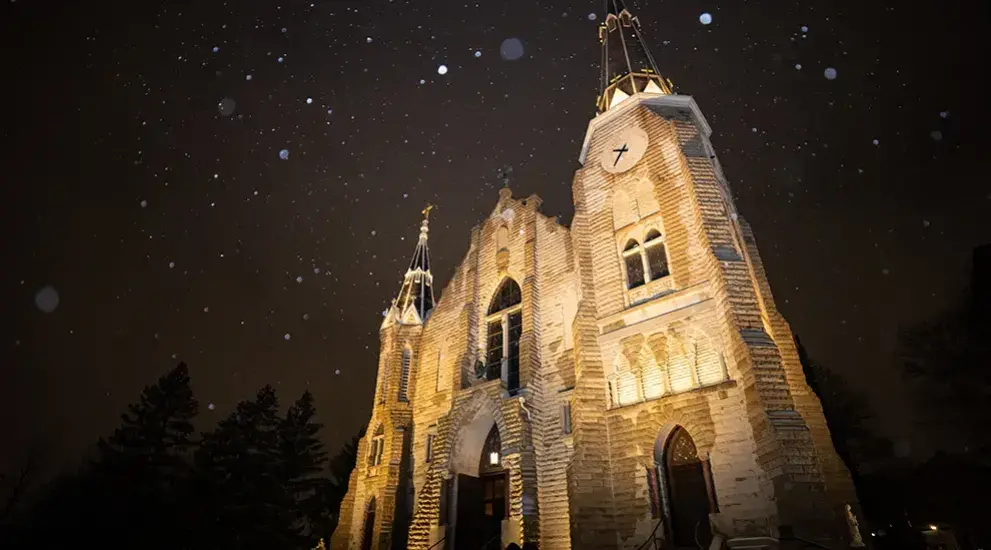
A History of Innovation
Creighton has been a leader in education for more than 140 years. We were the first to offer an entry-level Doctor of Physical Therapy degree (1992), and established the second Doctor of Occupational Therapy degree in the U.S. Today, we're the only U.S. Jesuit institution to house a medical school, dental school and also a pharmacy school. Read more about how Creighton has made an impact through the years below.

